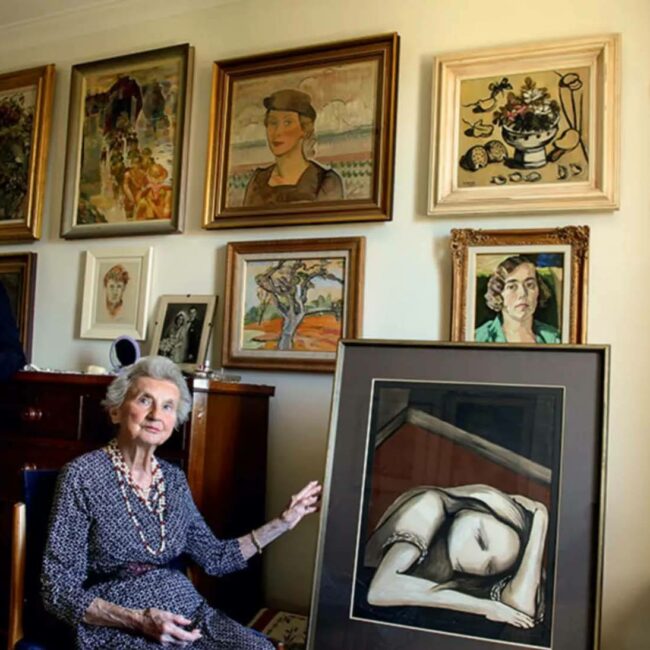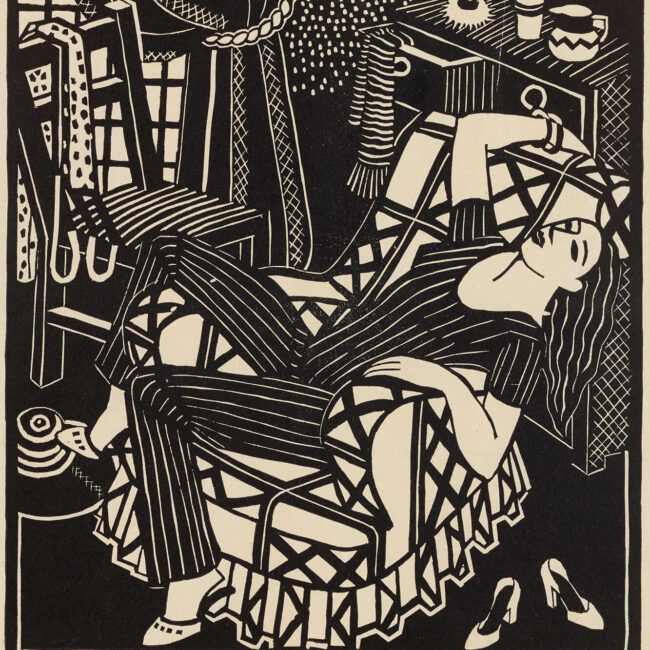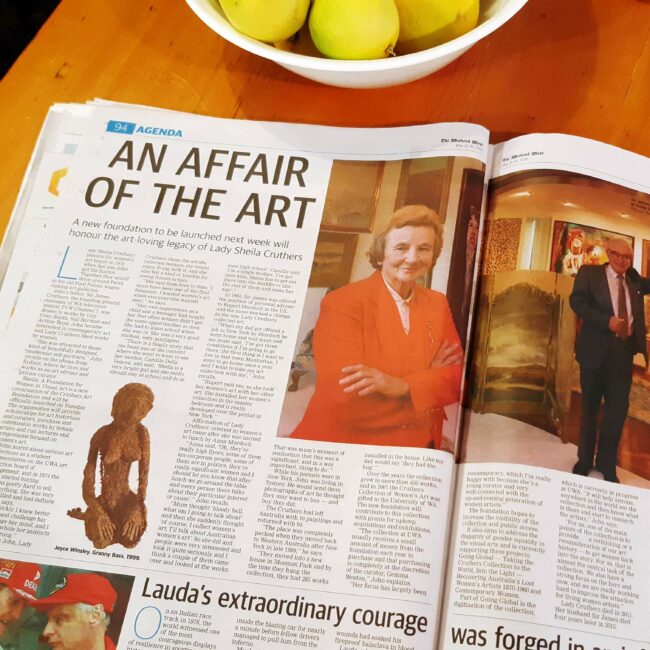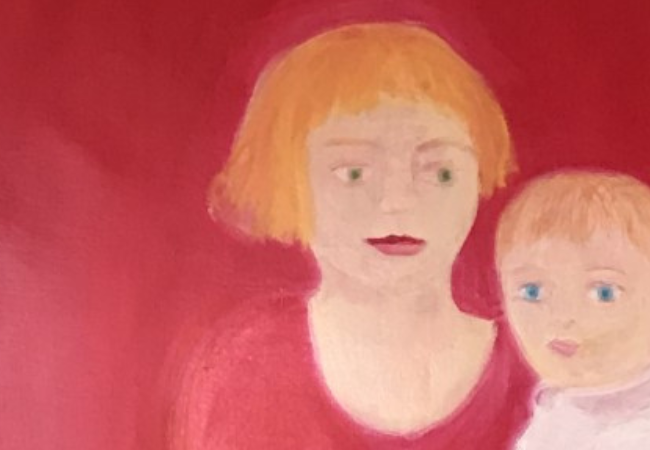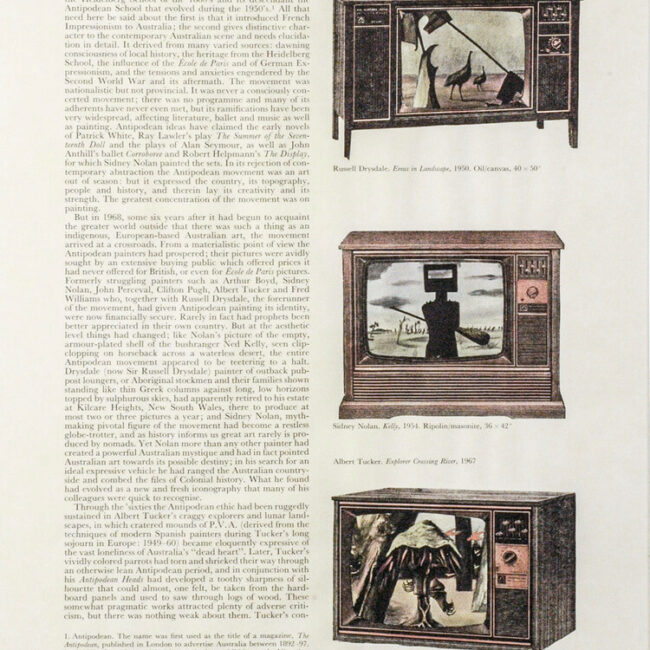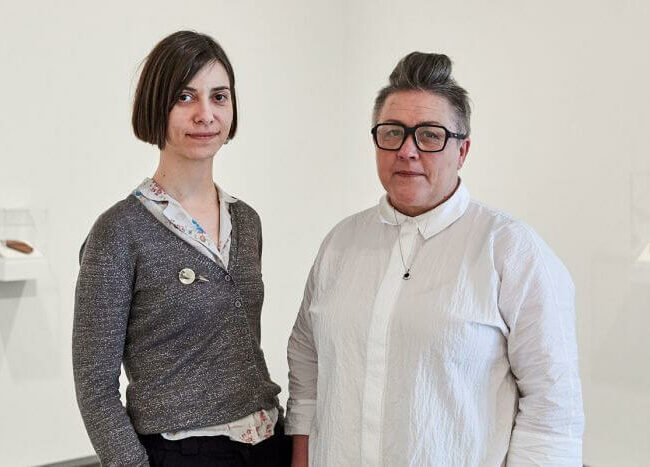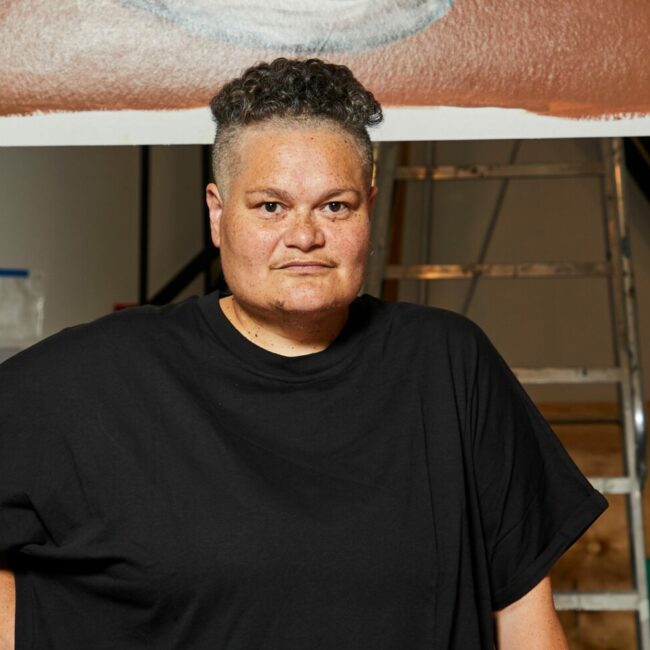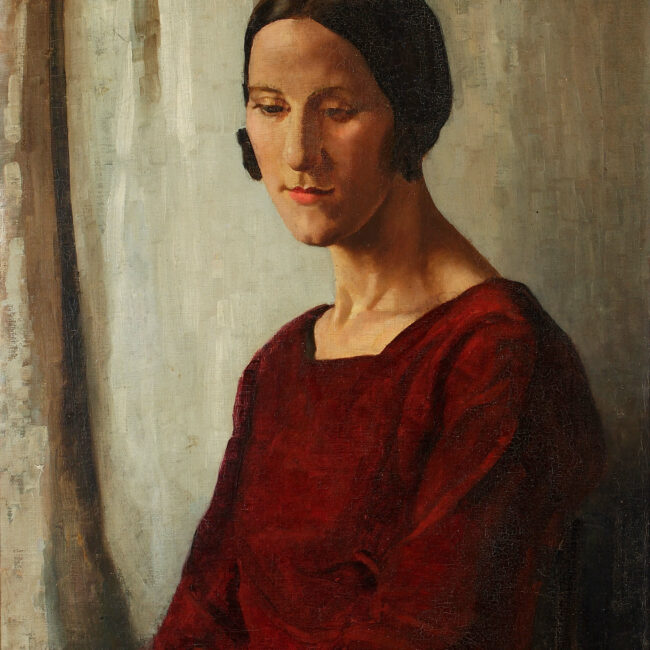Janet Dawson (b. 1935) trained as a printmaker and worked in the lithography workshop at Gallery A in Sydney in the 1960s. She was one of only three women out of 40 artists invited to contribute to The Field, an exhibition of abstract works at the National Gallery of Victoria in 1968. In 1973 Janet Dawson won the Archibald Prize.
When Sheila Foundation acquired Over the Rainbow in 2019, Janet shared this reminiscence of its creation:

Janet Dawson, Over the Rainbow, 1968, acrylic on board, 93.5 x 214.0cm. Courtesy the artist and Charles Nodrum Gallery, Melbourne.
“It’s an obvious fact, but somehow surprising; people with large workplaces make large works, people with small workrooms make small works.The painting Over the Rainbow was made in Sydney 1967-68. It was exhibited in a solo show at Gallery A (Sydney) in the Autumn of 1968. It is one of the first group of high colour, flat-surface paintings I made to explore the qualities of composition board and acrylic paint. This was the time for the big ones. The materials – new to me – invited flat paint areas. My working conditions were magnificent. Fresh, pure white walls, big windows, clean wooden floor, and an enormous space to be alone and bash around, in my own time at my own pace. My printmaking duties were minimal, and an exhibition date lay ahead. So, like a dedicated working sheepdog, I was ON POINT!”
Here is the story:
When Max Hutchinson opened the Sydney branch of Gallery A, he needed storage for big objects. The Gallery A artists were (a number of them) working very big. Exhibition Furniture (sculpture stands, etc.) had to be kept safe, clean and ready for use.
The lithographic workshop was to be moved from Melbourne to Sydney. I was to set it up, to continue the printmaking process.
Also, I was to train a successor printmaker to take over from me. I moved to Sydney.
Max leased a very big, old, deserted bond store building in Mary Place; a cobbled lane conveniently very near the Gallery A exhibition building.
The Mary Place building was four floors, solid brick, with high ceilings, sound wooden floors, and a ground floor of cement, which, when repaired, would take the big litho press and become the lithograpic workshop. Later, it took on etching presses and other graphic processors.
Max had the building repaired and all interiors painted white. The great litho press was installed and off we went.
The light in the building was magnificent. Big glass windows ranged along the long sides of the building. Solid wooden floors, wide wooden staircase with big landing spaces. Spacious enough to manoeuvre big crates or bundles on each landing.
The grand window parade of my second-story workplace looked out over the roofs of Paddington towards Bondi. A long view, and, at that height, very quiet. Quite often, on a sunny day, a fat little white cloud would drift past at window height.
It’s an obvious fact, but somehow surprising; people with large workplaces make large works, people with small workrooms make small works.
Blue Poles V. Palmer’s Sleeping Shepherd.
But then, think of the great space in that very small etching!
So, the painting Over the Rainbow was made in a splendid workplace at a time of vigour and happiness. I try not to read back stories into paintings. But perhaps, this work speaks for itself!
As I scratched and pecked around in my chook-yard of memories of the Rainbow painting, I became aware of a small shadow scratching away nearby.
It was not to be caught until the big essay had shaped up.
Here it is; the shadow story:
When I recall the white walls and grand spaces of Mary Place building another memory arises.
The white walls and grand spaces of Gallery A, Melbourne. Another building reclaimed and renewed.
When Max Hutchinson moved Gallery A out from the inner city (1962-63) it took time to clean, restore and set up the building he had acquired. It had been a car and truck repair centre. The walls were black with grease and enamel paint. The floor had been concrete, but was a dangerous mess of mucky rubble.
The beautiful elegant airy white spaces that Max and Clement Meadmore created from all this were astonishing.
I witnessed all stages of this renewal. The gallery staff were housed in temporary office accommodation nearby.
It is not well known that there were two buildings in the Gallery A Toorak Rd site. Max also leased the next-door building which was joined with the other. The two sites shared walls, roofing, skylights. They were part of a long, five-shop linked complex. The adjoining space was dusty, empty, and softly lit by old skylights. The floor was made of good, broad wooden planks in fine condition.
This floor was set higher than the new concrete floor (HOORAY!) of the white gallery. Max designed a simple arched opening, with two steps up to the floor-line of the old next-door space. This glimpse of the soft dusty place beyond was romantic, haunting and effective.
As the gallery staff settled in and the exhibitions became regular, it was agreed that I could use the next-door area to make paintings. It was, of course, used for storage, but there was enormous space to spare (Here comes the memory chook!) for BIG paintings! That great dim quiet place produced the Origin of the Milky Way and St George and the Dragon; two large paintings that share a celebratory vigour and bounce. To me they seem linked to the Rainbow painting. In character – and the link may be in the circumstances of the making.
Janet added further reminiscences of the built environment that facilitated the production of her large work, and some impressions that evoke the mood of the time:
The start-again atmosphere of a refreshed and reclaimed workplace, and a huge workroom.
The cheerful and uncritical company of people nearby – working on positive and creative jobs.
The freedom to work vigorously with plenty of materials.
Time/out without pressing obligations and no distractions.
Serious and responsible work to be resumed soon, but not too soon.
*****
The dusty old space became busy in a short time.
Gallery A art classes (Janet Dawson teaching)
Art appreciation lectures (we could sit 80 people easily!)
(James Mollison gave two magnificent lectures)
Furniture display and showroom. The modern objects looked splendid in the old surroundings!
So, having scratched up, inspected and recorded the chunk of memory, I shall cluck off to my roost and have a good sleep.
JANET DAWSON BODDY 24 APRIL 2019





















